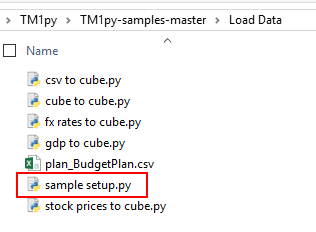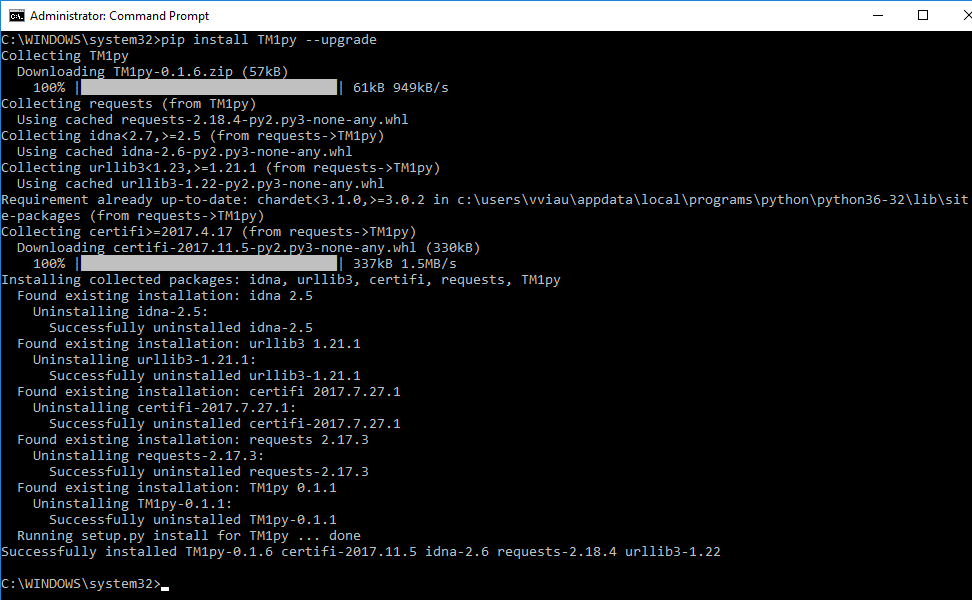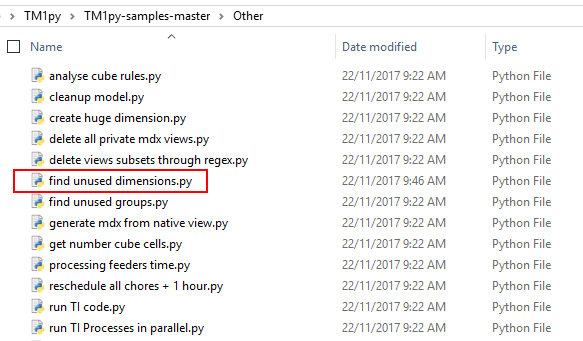-
Set up jupyter notebook

Jupyter is an open-source web application that enables you to mix code-execution and comments. It is great to tell a story and run through the code sections by sections.
-
Check Connectivity with TM1

In order to check if TM1py can connect to your TM1 instance, you can use the check.py Python script from the samples. First download the samples from Github and then navigate to the TM1py-samples folder that you downloaded from Github, in this example the samples are located in the following folder:
-
Set up your development environment

To use TM1py samples, you do not have to have a development environment, you can just edit the script in a text editor or in jupyter and then run the script. But if you want to dig deeper into the Python language, having a development environment will make your life easier.
-
Run TM1py script from TM1 process

This article explains the steps to run a TM1py script from TM1 process.
-
Create TM1 objects for TM1py samples

All the TM1py scripts in the Load Data folder requires some TM1 objects. These scripts load data from different datasources into TM1 cubes. If you want to test these scripts without changing the target cubes, you will need to create these TM1 objects.To create these objects, you can run the script sample setup.py which is in…
-
Check if the TM1 REST API is enabled
TM1py uses the TM1 REST API to connect to TM1.
-
Upgrade TM1py

To upgrade TM1py, after checking your current version, just open the command line and type:
-
Generate MDX Queries from Cubeview

MDX is a fast and powerful way to query data from TM1 Cubes. It can play a key role when you combine your TM1 models with other technologies (e.g. Canvas, R, Python).
-
Find unused dimensions

Ever wondered which of the dimensions in your TM1 Model are not used in cubes?
-
Cleanup your TM1 application

Sometimes our TM1 models (especially non-production environments) become messed up with temporary and unwanted objects, like